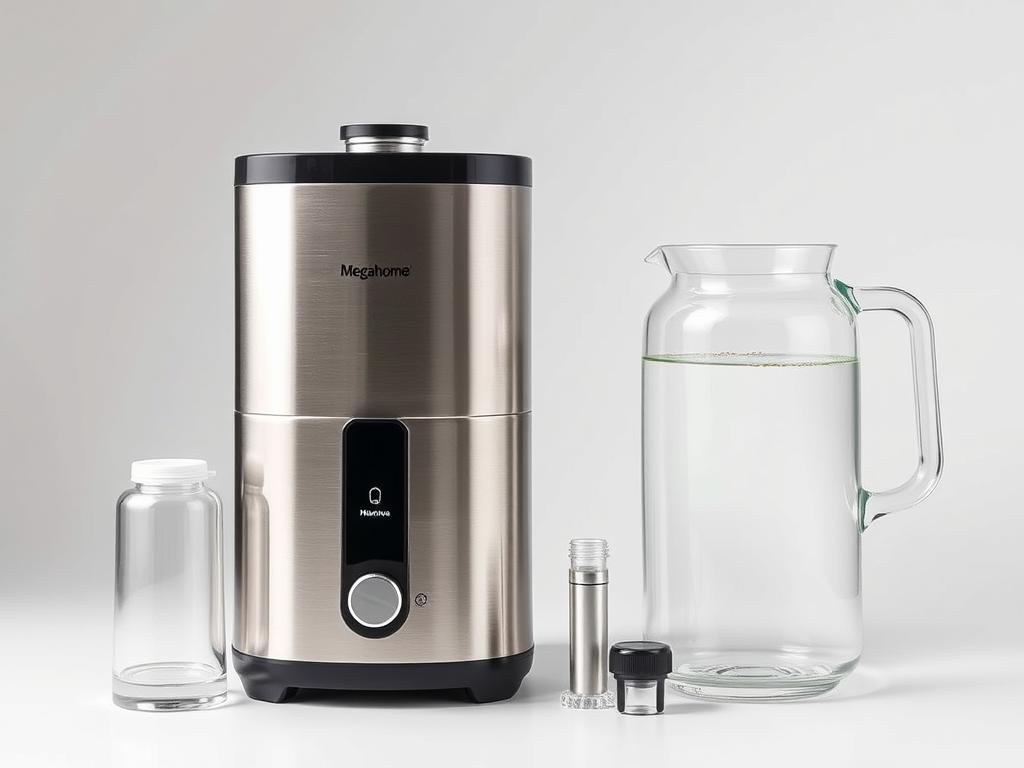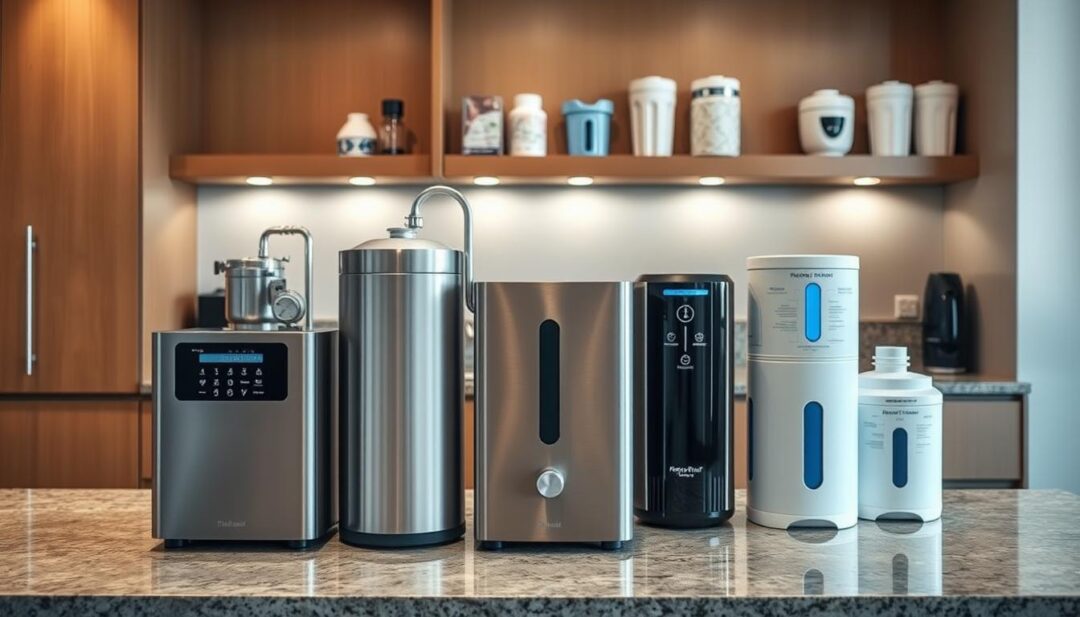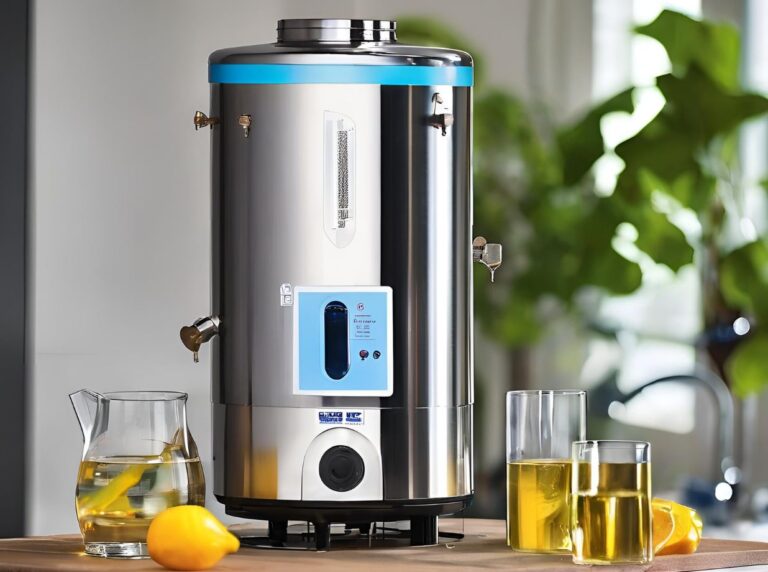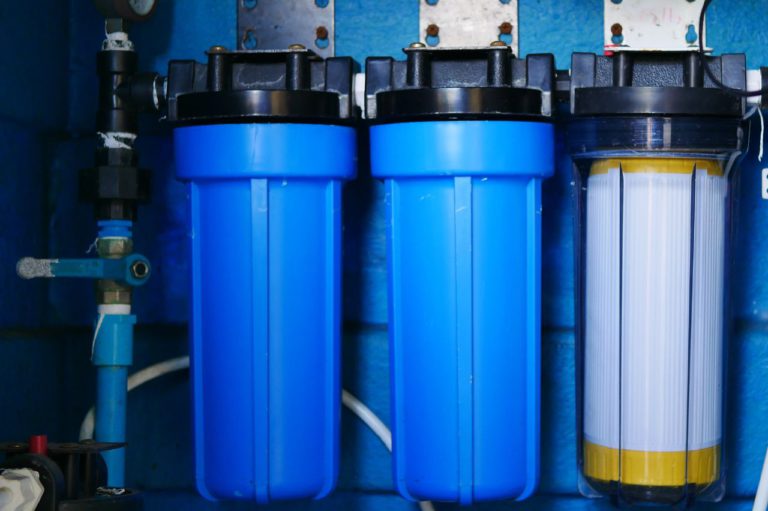Beginner’s Guide to Whole House Water Distiller Systems
Did you know your tap water could contain harmful contaminants, even if it looks clean? Many households unknowingly consume water with traces of heavy metals, bacteria, or chemicals. A whole house water distiller system offers a reliable solution, delivering purified water to every faucet.

These systems use water distillation to remove up to 99.9% of impurities, including chlorine, lead, and microorganisms. Beyond drinking, they protect appliances, improve skin health, and even extend the lifespan of plumbing. With rising concerns over waterborne diseases, investing in clean water has never been more critical.
This guide breaks down how these systems work, their benefits, and what to consider before purchasing. Whether you’re tackling hard water or chemical runoff, understanding water filtration options helps you make an informed choice.
Key Takeaways
- Whole house systems provide purified water to every tap in your home.
- Distillation removes nearly all contaminants, including heavy metals and bacteria.
- Clean water benefits appliances, skin health, and overall well-being.
- These systems are cost-effective long-term compared to bottled water.
- Choosing the right system depends on water quality and household needs.
Beginner’s Guide to Whole House Water Distiller Systems: The Basics
Many homeowners don’t realize that standard water treatment methods leave behind contaminants. Unlike portable units, whole house systems connect directly to your plumbing. This ensures every faucet delivers distilled water, free from impurities.
These systems replicate nature’s purification process. Water evaporates, leaving pollutants behind, then condenses into pure droplets. Municipal filtration methods often rely on chlorine, which misses bacteria and heavy metals. Distillation eliminates 100% of these threats.
From showers to dishwashers, every water supply point benefits. Appliances last longer, and skin feels smoother without chemical residues. Certified systems meet NSF/ANSI standards, guaranteeing safety and performance.
Choosing the right setup depends on your home’s needs. Larger households may require higher-capacity units. Always check certification labels to ensure quality and reliability.
How Does a Whole House Water Distiller Work?
Distillers turn tap water into pure H2O by mimicking nature’s cycle. Using heat and phase changes, they remove contaminants invisible to the eye. The result? Water so clean it rivals mountain springs.
The Science Behind Distillation
Inside the boiling chamber, water heats to 212°F, creating steam. This evaporation leaves behind minerals, bacteria, and chemicals. Only pure vapor rises, while pollutants stay trapped.
A stainless steel condenser cools the steam, turning it back into liquid during condensation. An activated carbon filter then catches volatile organic compounds (VOCs). These gases escape evaporation due to lower boiling points.
Step-by-Step Distillation Process
- Heating: The boiling chamber brings water to a rapid boil.
- Separation: Steam rises, leaving solids and contaminants behind.
- Cooling: The condenser coil transforms vapor into purified droplets.
Automatic models process 2–3 gallons hourly—ideal for a 4-bedroom home using 20 gallons daily. Manual units take 4–6 hours per gallon. Energy use averages 3kW per gallon (about 30¢).
Unlike countertop distillers, whole-house systems integrate with plumbing. This ensures every shower, sink, and appliance receives contaminant-free water. The boiling chamber and carbon filter work silently, often unnoticed until you taste the difference.
Pros and Cons of Whole House Water Distillers
Clean water isn’t just about clarity—it’s about what you can’t see. These systems deliver unmatched purity but come with trade-offs worth understanding before purchase.
Why Distillation Wins for Purity
No other method removes heavy metals like lead and arsenic as effectively. The EPA lists 104 contaminants eliminated by distillation, including nitrates and viruses that bypass carbon filters.
Health advantages go beyond drinking water:
- Reduces long-term exposure to cancer-causing chemicals
- Essential for those with weakened immune systems
- Prevents bacteria buildup in home medical devices
The World Health Organization confirms most minerals come from food, not water. For appliance protection, distilled water prevents limescale in water heaters and coffee makers.
Considerations Before Installing
Distillation uses more energy than filtration. Modern solutions include:
- Solar-compatible units for eco-conscious homes
- Timers to run during off-peak hours
- Smaller batch processing for efficiency
Some notice a “flat” taste compared to mineral water. Simple fixes like remineralization cartridges restore electrolytes without compromising purity.
| Feature | Distilled Water | Mineral Water |
|---|---|---|
| Taste Profile | Neutral | Distinct mineral notes |
| Mouthfeel | Light | More textured |
| Health Impact | Pure hydration | Trace mineral intake |
With proper care, these systems last 10-15 years—a smart investment for health-conscious families. The initial cost balances against eliminating bottled water expenses and plumbing repairs.
Types of Whole House Water Distiller Systems
From compact countertop units to whole-house setups, distillation systems vary widely in scale and function. Whether you need purified water for a single faucet or an entire household, understanding these options ensures the best fit.

Countertop vs. Whole-House Units
Countertop distillers, like MegaHome’s 1-gallon model, suit small spaces but lack whole-home coverage. Whole-house systems, such as VEVOR’s 12-gallon reservoirs, deliver purified water to every tap. Larger capacity units are ideal for families, while countertops work for apartments.
Automatic vs. Manual Systems
Automatic models require a 240V outlet but process water continuously. Manual units use standard 120V power but need frequent refilling. “Automatic distillers save time, while manual ones offer budget flexibility,” notes a plumbing expert.
Plumbing-Integrated Distillers
These systems connect directly to your pipes, requiring professional installation (≈$500 labor). They’re perfect for new construction or retrofits. Stainless steel storage tanks maintain purity better than plastic alternatives.
“Investing in a whole-house system pays off in 3–5 years by eliminating bottled water costs.”
Residential units cost $1,200–$2,500, while commercial-grade distillers exceed $4,000. Assess your household’s water usage and capacity needs before deciding.
Key Applications of Distilled Water in Your Home
Your home benefits from distilled water in ways you might not expect. Beyond drinking, it enhances cooking, protects appliances, and even extends the life of your car. Here’s how to make the most of your purified supply.
Drinking and Cooking
For drinking, distilled water offers unmatched purity—free from lead, chlorine, and chemicals. It’s especially vital for babies or immune-compromised individuals.
In the kitchen, it improves consistency:
- Coffee tastes smoother without mineral interference.
- Bread dough rises evenly due to pH neutrality.
- Ice cubes stay crystal clear.
Appliances: Humidifiers, Irons, and CPAP Machines
Distilled water prevents scale buildup in machines. CPAP manufacturers mandate its use to avoid bacterial lung infections. A study showed an 85% reduction in iron calcification for appliances like steam irons.
Other benefits:
- Humidifiers emit cleaner mist, reducing respiratory irritants.
- Medical devices (e.g., nebulizers) stay sterile.
Car Maintenance: Batteries and Radiators
AAA research confirms lead-acid batteries last twice as long with distilled water. Tap water’s minerals cause sulfation, shortening battery life.
For radiators, it prevents corrosion and mineral deposits. Luxury car washes also use it for spot-free rinses.
| Application | Distilled Water | Tap Water |
|---|---|---|
| Battery Life | Extends lifespan | Causes sulfation |
| CPAP Safety | Prevents bacteria | Risk of contamination |
| Coffee Taste | Clean, balanced | Metallic aftertaste |
“Distilled water is non-negotiable for medical devices—it’s the gold standard for safety.” —Respiratory Therapist Association
Maintenance and Cleaning Your Water Distiller
Keeping your system in top shape ensures pure water and peak efficiency. Regular cleaning prevents mineral buildup and extends the lifespan of critical parts like the boiling chamber and filter. Follow these simple routines to maintain optimal performance.

Daily Care Tips
A quick daily check takes less than a minute but makes a big difference:
- Inspect the reservoir for sediment or debris
- Ensure vents and airflow paths are clear
- Wipe exterior surfaces with a damp microfiber cloth
For homes with hard water (>150 ppm), consider pre-softening to reduce scaling. Use a tracking sheet to log filter changes and cleaning dates—this helps spot patterns in maintenance needs.
Deep Cleaning: A Step-by-Step Guide
Every 40-60 gallons (typically monthly), perform a thorough descaling:
- Mix a solution of 1 part white vinegar to 3 parts water
- Fill the boiling chamber and let soak for 12 hours
- Scrub gently with a nylon brush, avoiding abrasives
- Rinse thoroughly before next use
For stubborn deposits, commercial descalers like Still Clean work faster than DIY solutions. Always handle the condenser coil carefully—bends reduce efficiency.
| Maintenance Task | Frequency | Cost Estimate |
|---|---|---|
| Carbon Filter Replacement | Every 6 months | $15–$30 |
| Boiling Chamber Descaling | Monthly | $2 (vinegar) |
| Gasket Lubrication | Yearly | $5 (food-grade lubricant) |
“Proper maintenance doubles a distiller’s lifespan—neglect is the #1 cause of premature failure.” — Water Quality Association
How Water Distillers Compare to Other Filtration Methods
Not all water purification methods work the same—some miss critical contaminants. While reverse osmosis and activated carbon filters are popular, they have gaps that distillation fills. Understanding these differences helps you choose the right defense against impurities.
Distillation vs. Reverse Osmosis
Reverse osmosis (RO) forces water through a membrane, but wastes 3-4 gallons per purified gallon. Distillation uses a 1:1 ratio, making it more water-efficient. RO also struggles with volatile organic compounds (VOCs) that vaporize during distillation.
| Feature | Distillation | Reverse Osmosis |
|---|---|---|
| Water Waste | 1 gallon waste per gallon | 3-4 gallons waste per gallon |
| VOC Removal | 99.9% effective | 60-70% effective |
| Energy Use | Higher initial use | Lower ongoing use |
| Cost per Gallon | $0.30 | $0.25 |
Distillation vs. Activated Carbon Filters
Activated carbon filters excel at removing chlorine but leave dissolved solids. A 2023 study showed they maintain 200+ ppm TDS (total dissolved solids), while distillation achieves 0-10 ppm.
- Heavy metals: Carbon reduces but doesn’t eliminate lead
- Microplastics: Distillation destroys them; carbon traps some
- Maintenance: Carbon filters need monthly changes
Hybrid systems combine distillation with remineralization filters for balanced mineral content. The EPA recommends distillation for homes near industrial areas due to superior chemical removal.
Conclusion
Choosing the right purification solution depends on your household needs and local water supply quality. Test results, family size, and budget all play key roles in finding the perfect fit.
While upfront costs may seem high, the long-term health benefits and appliance protection make it a smart investment. Start by checking your municipal water report or consulting a specialist.
For those unsure about commitment, try a countertop unit first. It’s an affordable way to experience the efficiency of distilled water before upgrading.
Ready to take the next step? Compare models or download our maintenance checklist to keep your system running smoothly for years.
Frequently Asked Questions
How does a whole house water distiller remove contaminants?
It heats water to boiling, turning it into steam. The steam leaves behind impurities like heavy metals and bacteria. The vapor then condenses back into purified water, free from most contaminants.
Is distilled water safe for drinking and cooking?
Yes! Distilled water is highly purified, making it ideal for drinking, cooking, and even baby formula. It removes harmful substances while retaining essential hydration benefits.
How often should I clean my water distiller?
Regular cleaning prevents buildup. Wipe surfaces weekly and deep-clean monthly. Follow the manufacturer’s guide for specific steps to maintain efficiency.
Can a whole house system handle my household’s water demand?
It depends on capacity. Larger units like AquaNui or Pure Water Distillers can supply multiple faucets. Check daily output (gallons) to match your family’s needs.
Does distillation remove chlorine and fluoride?
Yes. Boiling and condensation eliminate chlorine, fluoride, and other chemicals. For extra taste improvement, some systems add activated carbon filters post-distillation.
Are these systems energy-intensive?
Distillation uses electricity to heat water, but modern units optimize energy efficiency. Solar-compatible models, like those from MegaHome, reduce long-term costs.
How does distillation compare to reverse osmosis?
Distillation removes more contaminants, including viruses and dissolved solids. Reverse osmosis filters faster but may leave some impurities and require frequent membrane changes.
Can I use distilled water in appliances?
Absolutely! It prevents mineral buildup in humidifiers, irons, and CPAP machines. Distilled water also extends the life of car batteries and radiators.







